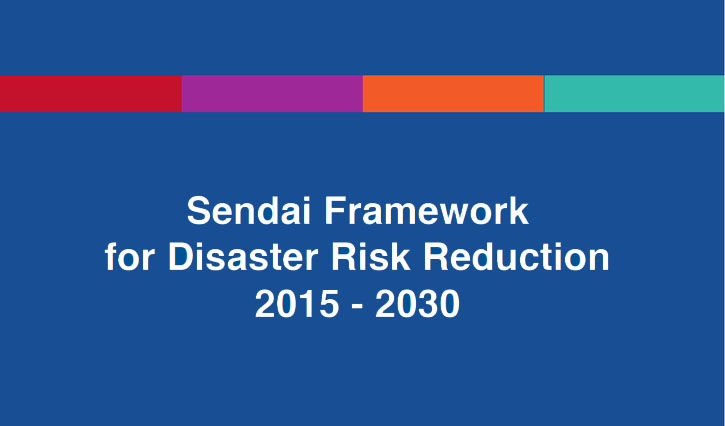Final workshop on the implementation of the UNDP project on reducing risks and vulnerability from glacial lake outburst (GLOF) and mudflows in Kyrgyzstan
In Bishkek, on March 27, 2024 the final workshop on the results of the UNDP project “Supporting a collective response to climate emergencies and creating sustainable development paths to support human security and green transformations” was held.
The Center, within the framework of this project and the Letter of Agreement between the UNDP and the CESDRR for the implementation of a UNDP project funded by the Government of Japan, implemented a component of the project “Reducing risks and vulnerability from glacial lake outburst (GLOF) and mudflows in Kyrgyzstan by strengthening the national disaster monitoring system and the adaptive capacity of communities.”
The final workshop was attended by representatives of ministries and agencies, scientific institutions interacting with issues of high-mountain lakes, as well as other stakeholders.
As part of the project, an information system was developed for monitoring outburst-prone lakes, equipped with its own algorithms based on machine learning. This will effectively prevent or minimize damage from natural disasters, especially from outbursts of glacial lakes and mudflows, and will also improve the accuracy and efficiency of forecasting floods and mudflows.
Deputy Minister of Emergency Situations of the Kyrgyz Republic Mr. Akylbek Mazaripov said: “Strengthening the national disaster monitoring system is a key factor in improving our emergency preparedness. Thanks to the support of UNDP and the Government of Japan, we have made significant progress in this area.”
Ambassador Extraordinary and Plenipotentiary of Japan to the Kyrgyz Republic Hideki Goda emphasized: “Kyrgyzstan is one of the most vulnerable countries exposed to the effects of climate change. Glacial lake outbursts can cause humanitarian, social, economic, environmental and political risks. The Government of Japan recognizes the importance of developing a sustainable society through close cooperation.”
UNDP Resident Representative in the Kyrgyz Republic Ms. Alexandra Solovyova noted: “This project is an important step in ensuring sustainable development and human security in Kyrgyzstan. Through our collaboration, we have been able to significantly improve the country's ability to prevent and respond to natural disasters."
An expert at the Situation Center of the Administration of the President of the Kyrgyz Republic, Kanatbek Chynybaev, noted: “It is gratifying to see that the results of this project directly meet the requirements of the implementation of the National Development Program of the Kyrgyz Republic until 2026, which reflects that addressing disaster risk reduction issues in a changing climate should be comprehensive, taking into account future threats and dangers, the development of new methods of forecasting and response."
The project achieved significant results in three key areas:
1. Development and Approval of the National Action Plan:
As part of the project, a national action plan until 2030 was created, which is aimed at improving the national capacity for monitoring and forecasting natural disasters and mudflow processes. The plan includes a comprehensive analysis of the current monitoring and forecasting systems in Kyrgyzstan. It also provides for the creation of an automated system for monitoring high-mountain lakes and the development of the concept of a Unified Integrated Monitoring and Forecasting System, which will operate until 2030.
2. Strengthening National Capacities for Disaster Risk Reduction (DRR):
The second key outcome was the strengthening of national capacity to manage risks associated with glacial lake outbursts. This is achieved by updating and integrating software and hardware with access to satellite data into the national disaster monitoring system. Work was carried out to improve the unified information system for monitoring dangerous lakes, including the introduction of innovative approaches such as machine learning algorithms, multi-parameter analysis and forecasting systems for risk assessment.
3. Increasing the Adaptive Potential of Local Communities:
The third important result of the project is strengthening the ability of local communities to adapt to the risks of glacial lake outbursts and mudflows. This was achieved through a joint approach, including training residents in pilot communities (Cholpon-Ata, aiyl okmotu of Chon-Sary-Oi and Bostera aiyl aimaks) in preventive actions, developing and improving local disaster risk reduction plans, as well as conducting practical activities, such as the construction of protective structures. An information campaign was also carried out to raise public awareness of natural hazards.
Summing up the results of the project, implemented with financial support from the Government of Japan, was a significant step in strengthening Kyrgyzstan’s resilience to natural disasters. Based on the successful implementation of advanced technologies and improved emergency response systems, the project has significantly strengthened national capabilities to monitor and forecast potential threats. This achievement not only improved the security of the people of Kyrgyzstan, but also provided an important contribution to regional and global efforts to adapt to climate change and reduce disaster risks.
The project “Reducing Risks and Vulnerabilities from Glacial Lake Outburst Floods (GLOF) in Kyrgyzstan by Strengthening the National Disaster Monitoring System and Adaptive Capacity of Communities” aims to minimize the risks and vulnerabilities associated with potential disasters caused by glacial lake outbursts and subsequent floods, ensuring the protection of local communities. The project was made possible within the framework of the Climate Promise initiative due to financial support from the Japanese government through the United Nations Development Program (UNDP).






















